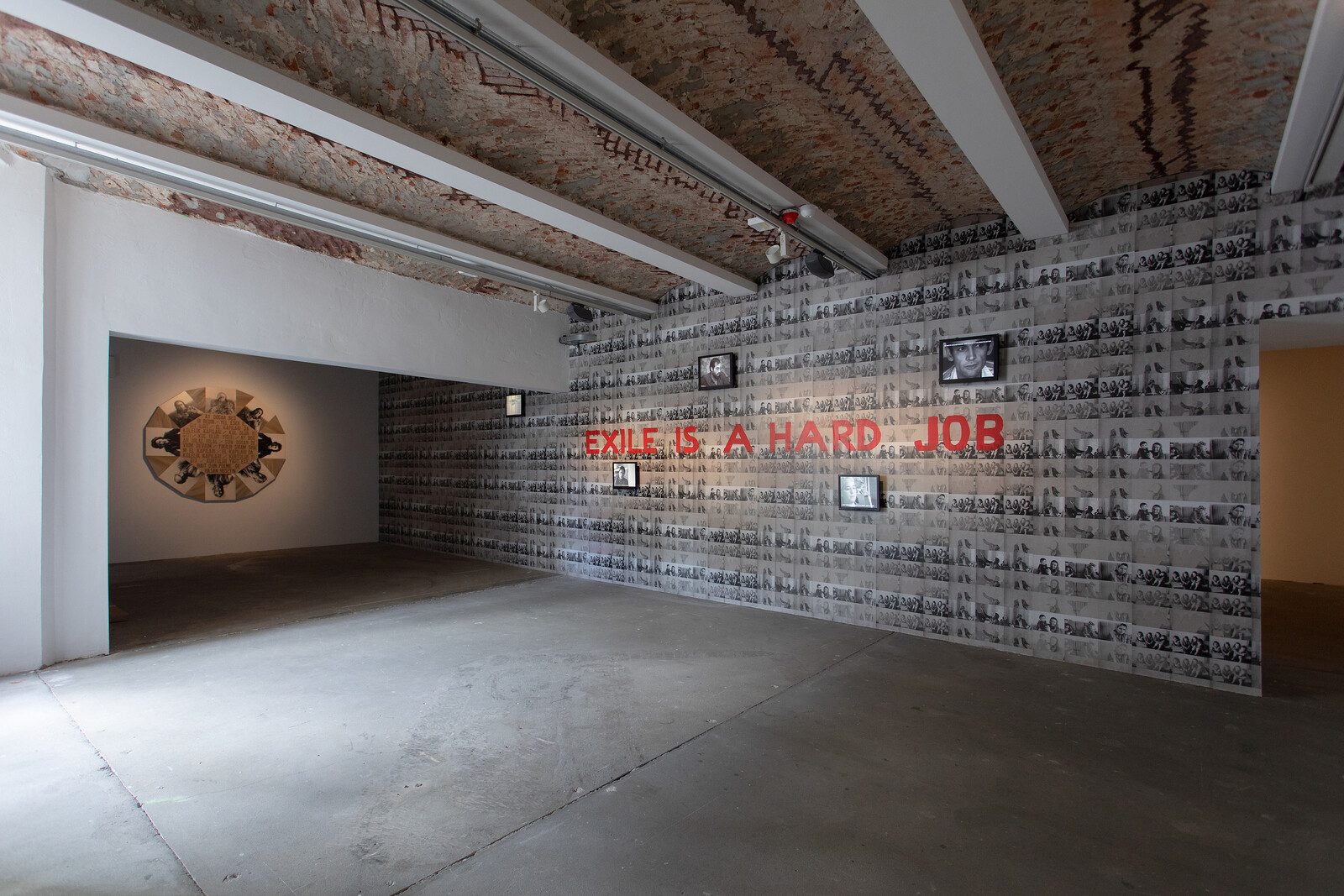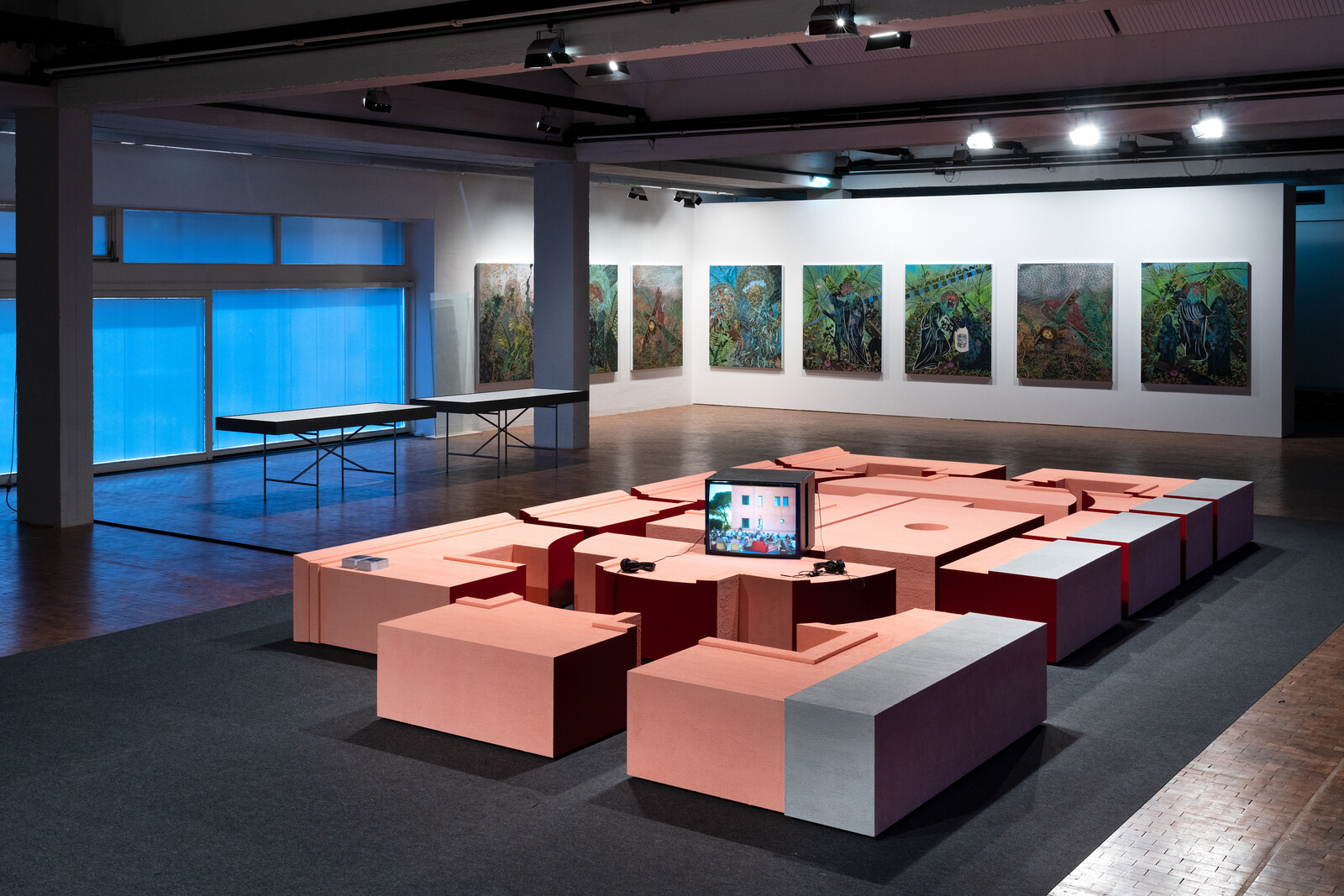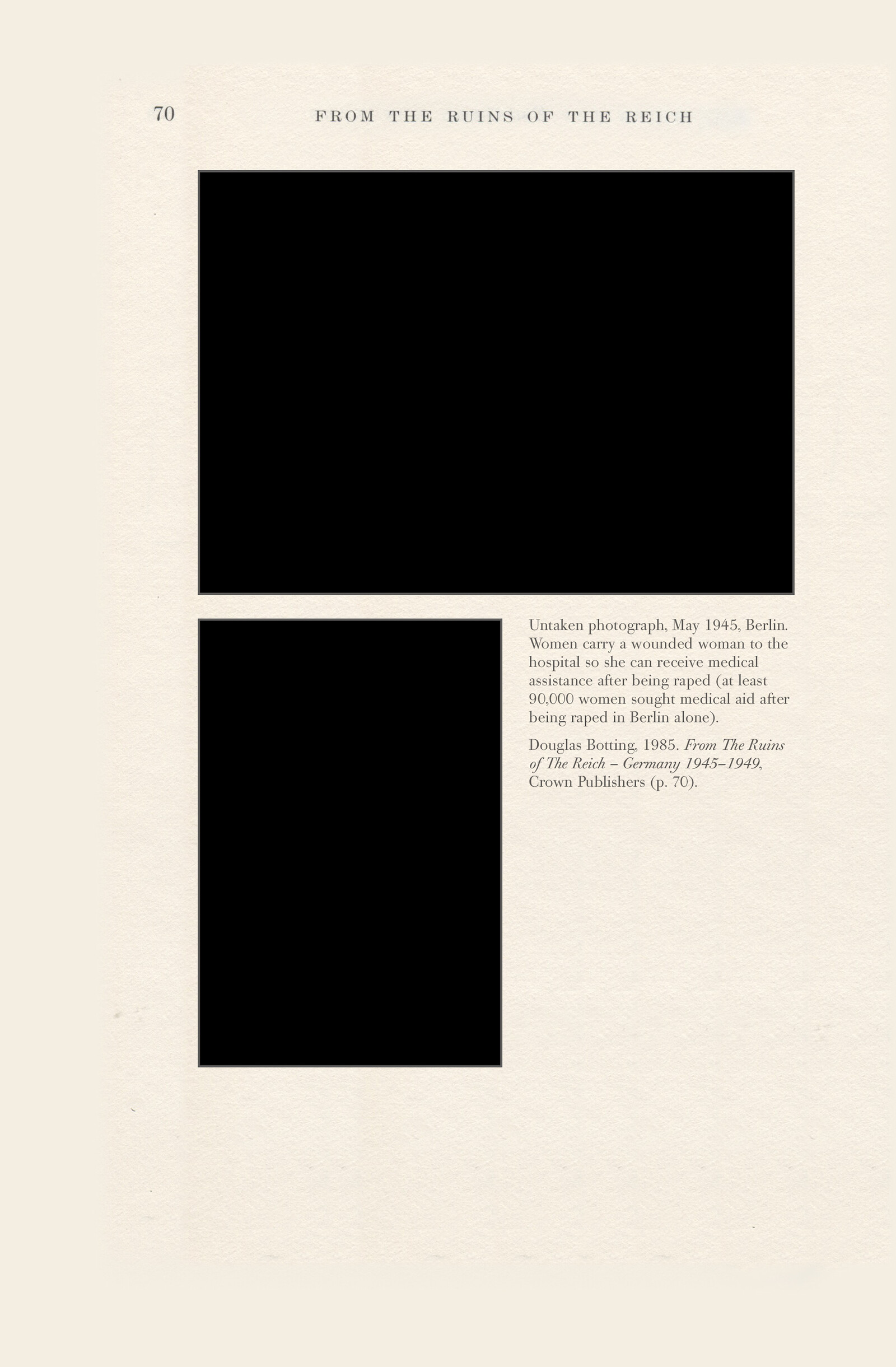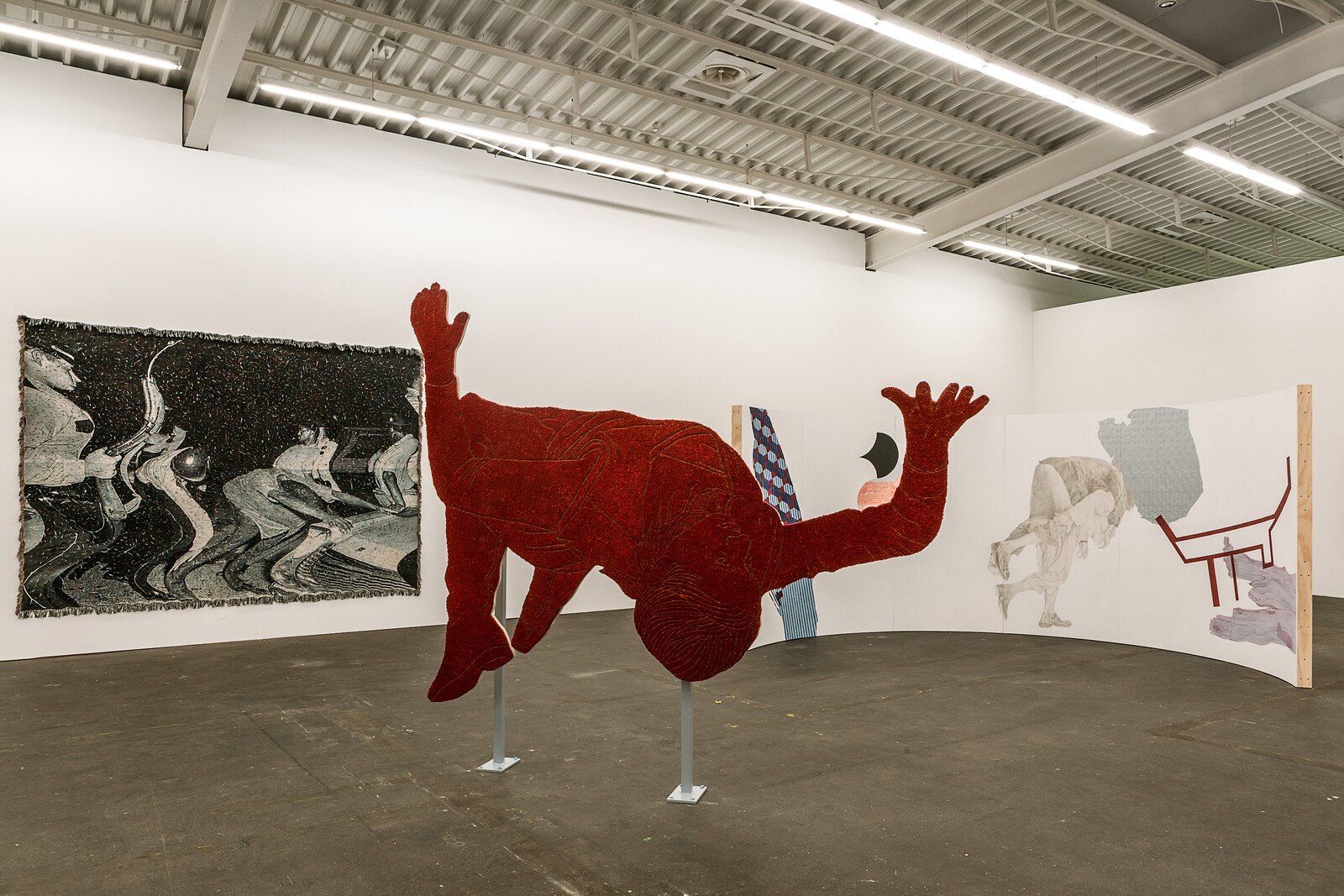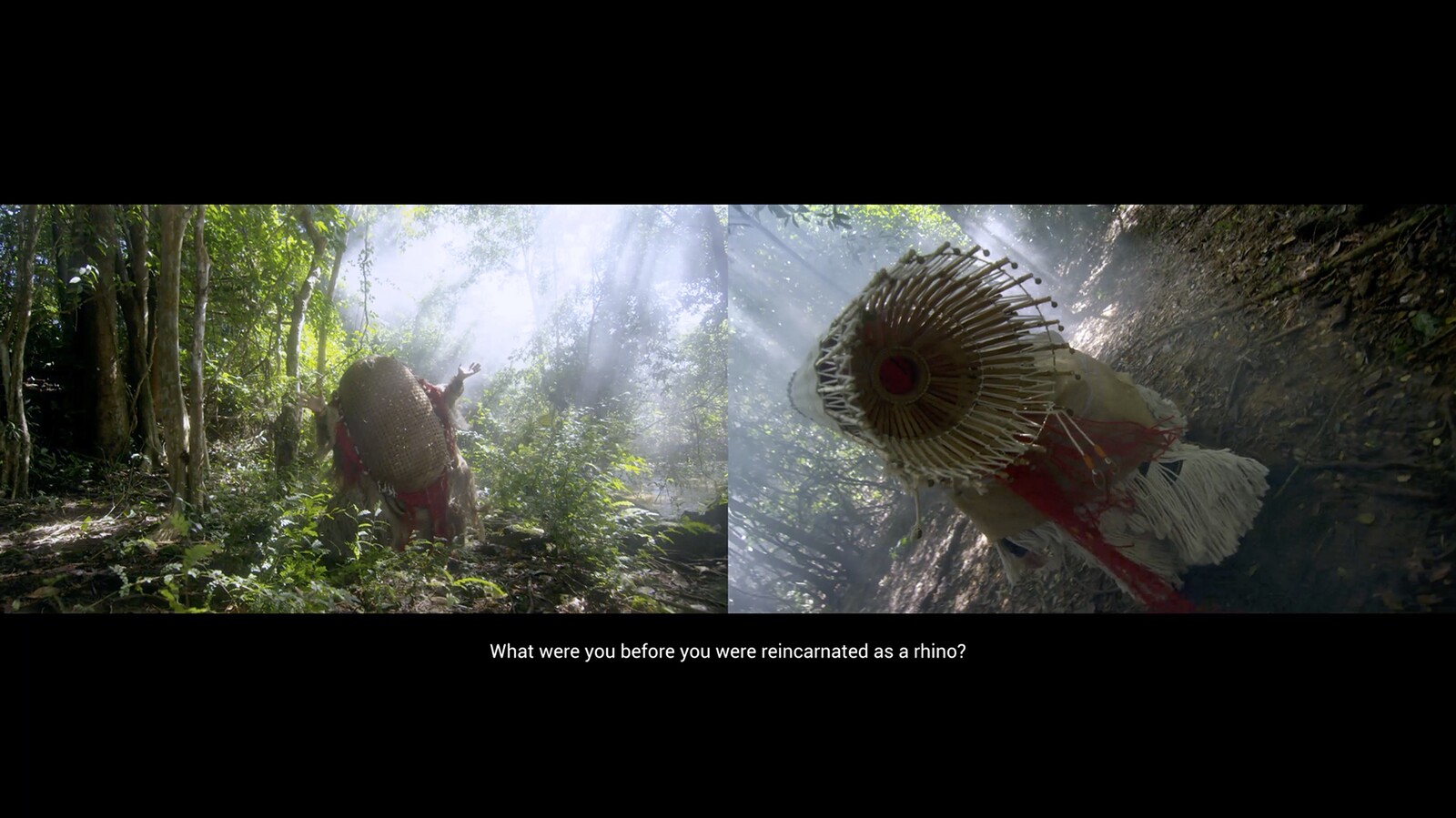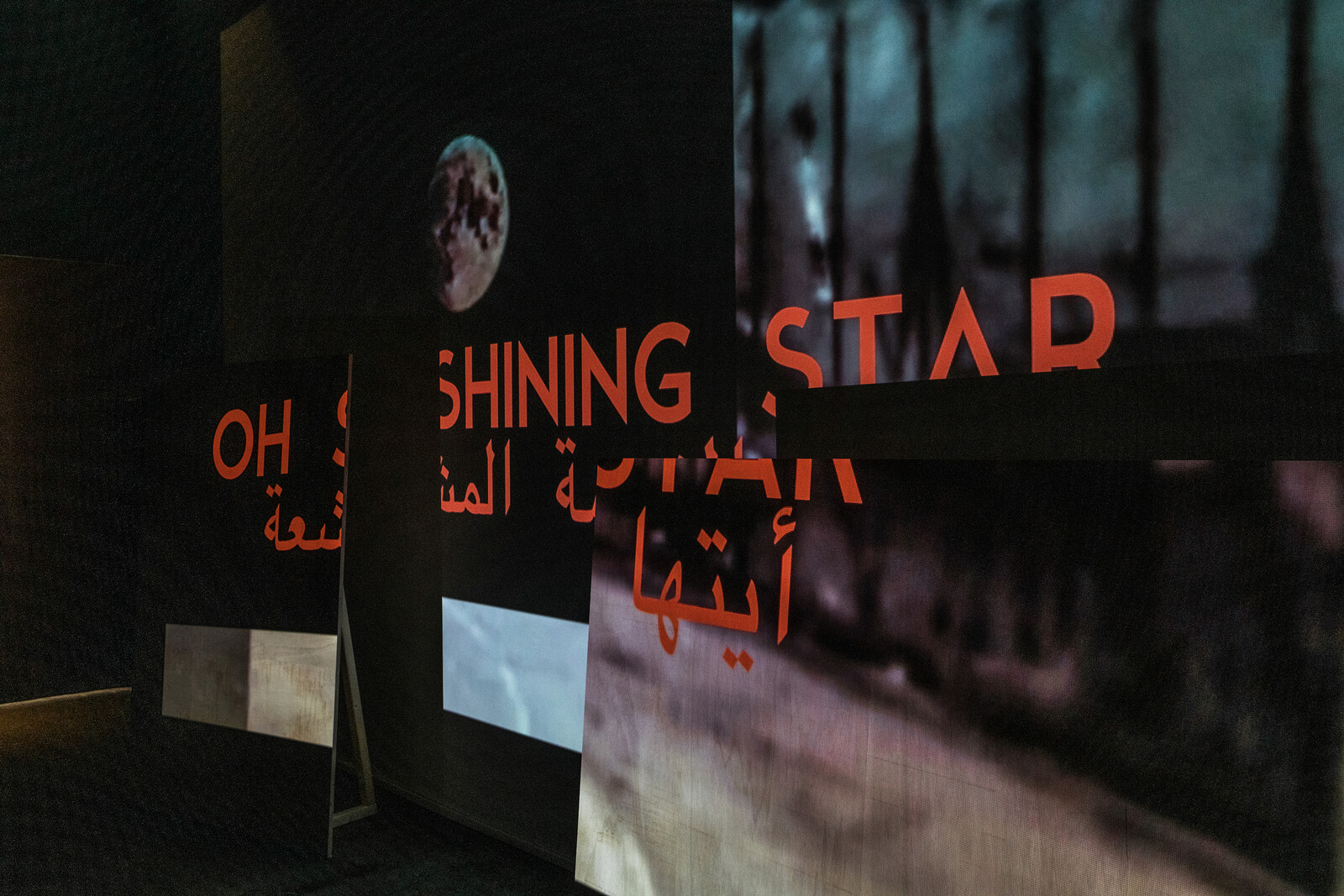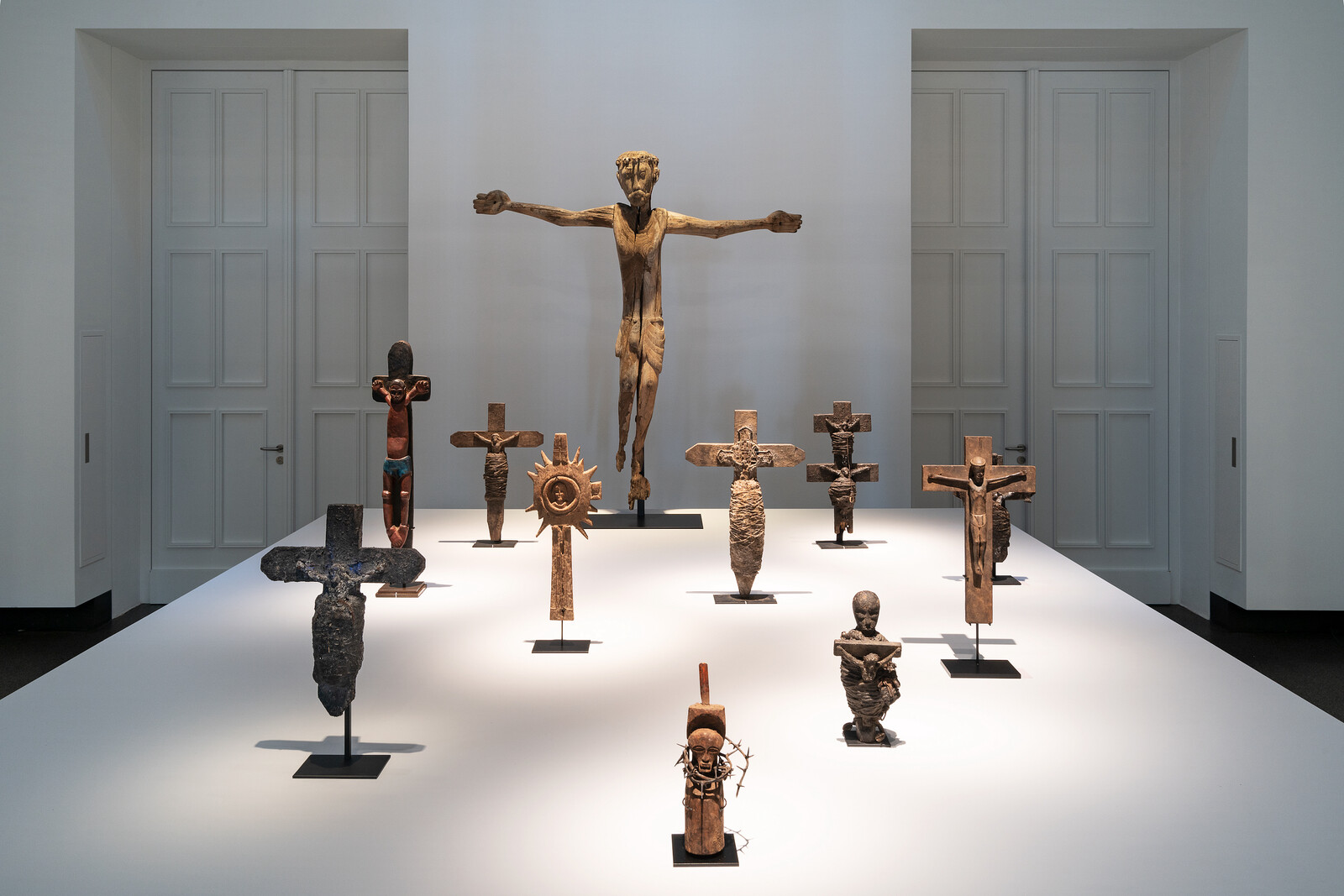As curator of the twelfth edition of the Berlin Biennale, Kader Attia continues his ongoing engagement with notions of injury and repair. There is precedent for this in his own artistic practice: the sprawling installation The Repair from Occident to Extra-Occidental Cultures (2012) staged reconstructed artifacts from ethnological collections that clearly reveal their stitching and staples, drawing a contrast with Western approaches to restoration that conceal an object’s damage and thereby silence the many stories it might tell. In the series “Repaired Broken Mirror” (2013–21), Attia sutured nondescript fractured mirrors with crude materials like staples or copper wire, a gesture of repair which appeared no less brutal than the act of breaking. The visible scars and reflective surface feel emblematic of this exhibition’s aspirations to hold a mirror to the legacies of colonialism and imperialism, sweeping environmental destruction, racism, sexism, and forced displacement due to war and climate change—and to propose ways forward.
Through works by 82 artists and collectives displayed across six venues, Attia endeavors to foster spaces of “collective speech and reflection” that respond to the accumulated, unhealed wounds that have been rendered invisible by discourses of expansionism, algorithmic governance, and 24/7 capitalism. Working against the universalist claims of western modernity, which are predicated on erasure, “Still Present!” attempts to lay bare the injuries that have resulted from centuries of violence. Attia’s biennale seeks to confront its audience(s) with the reasons why they—we—have failed to repair what his curatorial statement identifies as “the collective trauma that haunts our societies like a phantom limb of an amputated body.”1
On the ground floor of the KW Institute, bold lettering spells out “Exile is a Hard Job” atop a collage of photographs and video interviews.2 The sentiment of Nil Yalter’s work (1983/2022) rings true in a city that has seen its demographics shift with waves of recent migration from Syria and now (though not explicitly addressed here) from Ukraine, which has been paralleled by a striking rise in German xenophobia and hate crime over the past five years.3 Yalter’s work is followed by a large-scale photographic installation by Mathieu Pernot that traces his thirty-year relationship with the Gorgans, a Roma family on the outskirts of Arles. A mixture of documentary, staged, and snapshot photography, the work operates between socially engaged photography and participatory ethnography. Next comes Yalter, Judy Blum, and Nicole Croiset’s La Roquette, Prison de Femmes (1974-1975), which assembles a room of video, transcripts, drawings, and photographs to examine sexism in the French prison system.
From here, the exhibition opens onto the KW’s large basement space, which houses works encompassing topics such as the caste system in India, racist ethnographic museological display conventions, selections from the Egidio Marzona collection of ephemera dedicated to avant-garde art and political movements, a large-scale collective painting devoted to the torture and rape of a member of the Algerian Liberation Front, and Susan Schuppli’s video explorations of the intersections between climate and structural racism. Although the biennale was ostensibly organized around four leitmotifs—the formation of a decolonial ecology, the role of non-Western feminist movements in reappropriating historical narratives, a reinvention of debates on cultural restitution, and reclaiming what Attia calls the “field of emotion” through art—I nonetheless found it challenging to make meaningful affiliations between these highly specific, content-rich, and often aesthetically underwhelming works beyond superficial connections like systemic erasure, exclusion, violence, or invisibility.
A dense archival and documentary approach prevailed, as seen in the graphic maps by Moses März tracing the intersecting histories of decolonial struggles or Zusanna Hertzberg’s hanging banners that assemble a visual “herstory” of Jewish women’s resistance in Poland, Ukraine, Belarus, and Lithuania during World War II. The sheer number of such works—and the breadth of topics that they covered, which ranged from archival reflections on the Laval Decree, the 1934 law that prohibited French colonial subjects from filming themselves, to toxic weaponized clouds and the melting of polar ice caps—was staggering. Suspended from the ceiling in a tightly packed installation at Akademie der Künste’s Pariser Platz location and installed so that some of the text was well above eye level, the visible elements of März’s double-sided maps could easily take the better part of an afternoon to read in their entirety, which begs the question of whether such information-based works are intended to be read, or whether the material scope and scale of the information’s presentation— “information overload” as aesthetic end—merely gestures towards the vastness of the issue.
Still, there were moments where this archival approach was gripping. Despite the dryness of its display and the demands of a medium of display that explicitly refutes an aesthetic dimension—reading reams of text on the wall is never easy—Ariella Aïsha Azoulay’s The Natural History of Rape (2017/22) was deeply moving in its chronicling of the largely unacknowledged history of the many Berlin women who were raped by Soviet soldiers during the final days and immediate aftermath of World War II. Asking why this particular incident remains unrepresented amidst the flood of images the war produced, Azoulay interspersed black squares in place of photographs into a display of history books to articulate the categories of “untaken,” “inaccessible,” and “unacknowledged” documentation.
Many of the more unpredictable and imaginative approaches to storytelling in the exhibition took the forms of film and video works. Unlike the many data and statistic-driven works devoted to occupied Palestine, Basel Abbas and Ruanne Abou-Rahme’s Oh Shining Star Testify (2019/22) articulates a poetics of fragmentation. This extends from the formal effect of projecting three channels of video across a series of disjointed boards to its layering of text and image—an interweaving that derives its power from the contrapuntal rhythms of reading and looking. Yuyan Wang’s atmospheric video The Moon Also Rises (2022) responds to China’s 2018 initiative to launch three artificial moons into orbit above major cities to erode the distinction between day and night, thereby penetrating and taking over nearly all “significant interludes of human existence” in the interest of “work time, consumption time, or marketing time.”4
Installed between Forensic Architecture’s extensive Cloud Studies (2022) and DAAR’s installation that critically appropriates fascist colonial architecture in Sicily, Tuan Andrew Nguyen’s two-channel video My Ailing Beliefs Can Cure You of Your Wretched Desire (2017) offered a riveting reflection upon war, colonialism, and ecology through a voiceover discussion between the spirits of a fifteenth-century sacred tortoise and the last Javanese rhinoceros (poached in 2010). Unfolding alongside images of slaughterhouses, natural history museums, archives, stage animals performing tricks, and modern zoos, their conversation dismantles the conceptual divisions between nature and culture, asking instead what kind of reciprocity exists between human and non-human entities: how might we shape each other’s worlds in a post-industrial landscape, and moreover, how might we learn from them? What can animals teach us about care, about politics, about resilience, about living in a damaged world?
In his curatorial essay, Attia claims that through identifying society’s wounds and tending to them through listening and talking, we ultimately reinvent ourselves. “There are many ways to approach this difficult task,” he writes, “but I believe that only art, in which I include all creative fields, can successfully oppose imperialism’s seeds of fascism and its state apparatuses, precisely because art is unpredictable.”5 Art, he argues, following the communication scientist Daniel Bougnoux, can function like a “machine to slow down time,” thereby fostering spaces of resistance to the relentless demands of semio-capitalism. Yet despite the artist-curator’s invocation of the oblique, poetic dimensions of art, its “unpredictability,” many of the works in the exhibition seemed predictable in their aims: to convey information about a range of social ills that have heretofore largely been suppressed or ignored. Moments of deep absorption in “Still Present!” were few and far between. In its diminishing of the aesthetic, the exhibition’s didactic overtones often precluded the visceral feeling of engagement or implication that can inspire one to think beyond the frame of the work.
The aesthetic and conceptual precision of Attia’s artistic practice seems largely absent in this curatorial endeavor, in which the concise inquiries that have propelled his work in recent decades give way to a cacophony of voices that risk having their claims drowned out through the dense accumulations of pieces with similar formal and narrative approaches. The body that Attia presents as being in need of healing comes to feel like a sort of Frankenstein’s monster. Its broken and alienated body is a fitting cipher to work through the legacy of European Enlightenment; yet without clearly articulated interrelationships in the works’ installation, it is difficult to parse the differently nuanced perspectives and contexts to which they are addressed.
Kader Attia, “Introduction“ in Present Still! (Berlin: Kunst-Werke, 2022), p.24.
This same graphic appears on posters installed outdoors throughout the city.
“Annual Report of the Federal Anti-Discrimination Agency”, Federal Anti-Discrimination Agency, (2019), www.antidiskriminierungsstelle.de/SharedDocs/downloads/DE/publikationen/Jahresberichte/2019_englisch.pdf?__blob=publicationFile&v=4
Jonathan Crary, 24/7 (London: Verso, 2013), p. 15.
Ibid, p.28.

